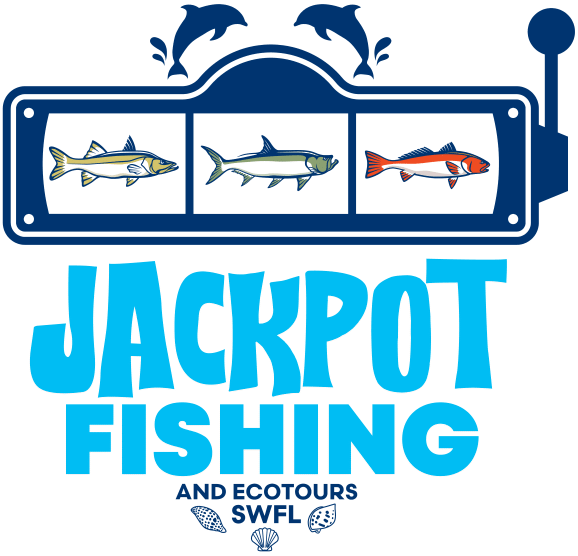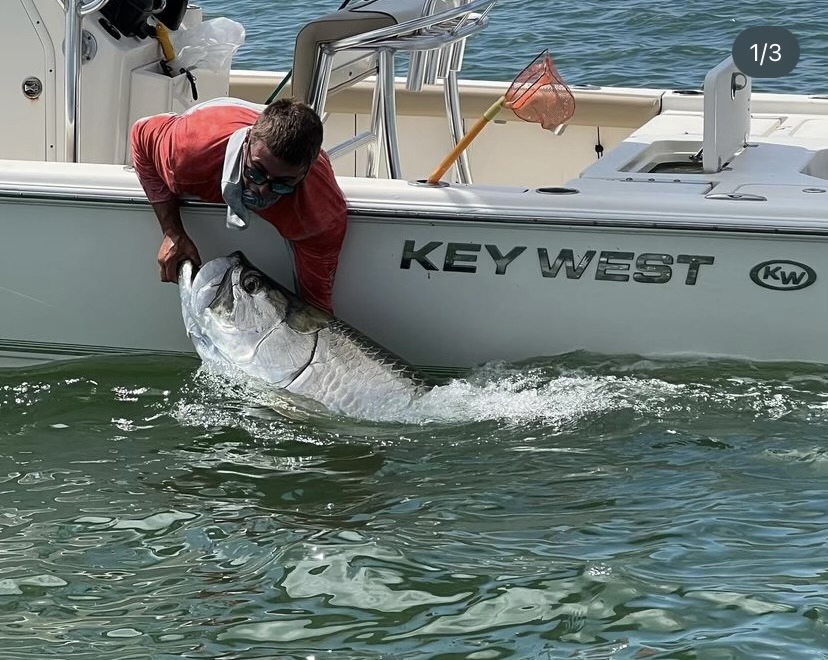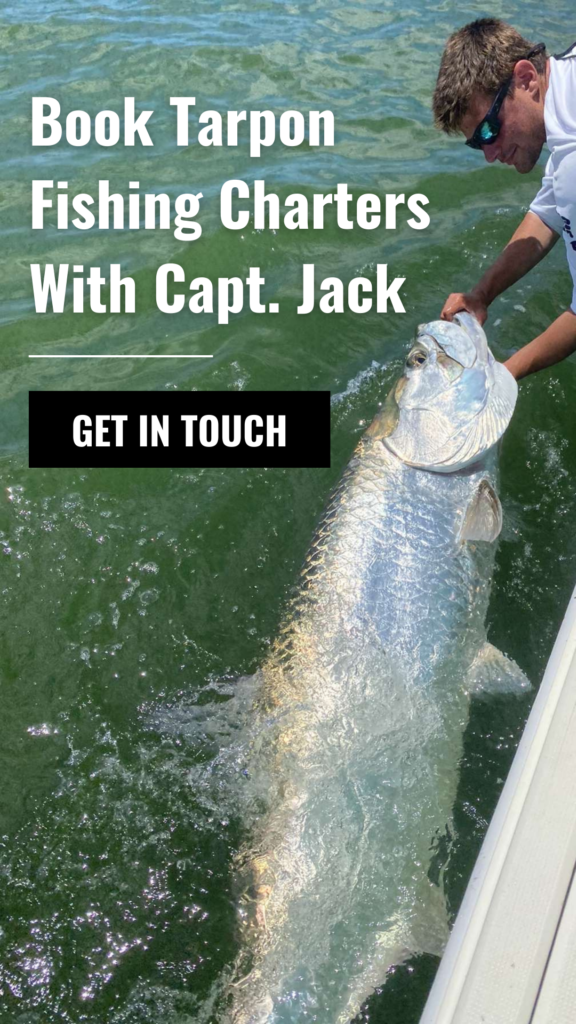A Local Guide’s Take on Timing the Silver King’s Journey
As a tarpon fishing guide here in Fort Myers, I plan my entire season around the migration of these incredible fish. There’s nothing quite like seeing those first rolling tarpon push into the area each spring—it’s the moment I know the action is about to begin. Tarpon are truly one of the most exciting species to target, with their explosive eats, head-shaking leaps, and raw power. But to consistently hook up with them, you’ve got to understand their seasonal movements through our local waters. Over the years, I’ve learned to read the tides, water temps, and bait patterns to stay one step ahead of the fish—and in this breakdown, I’m sharing everything I know about how tarpon migrate through Fort Myers.
When Does Tarpon Fishing Season Start Around Fort Myers?
Tarpon are warm-water fish, and they follow the temperature line north as spring arrives. Around here, we start watching water temps in February and March. Once things creep above 70°F, we know it’s go-time. These fish are coming up from the Florida Keys and the Caribbean, riding the warm currents and tracking big schools of bait like mullet, crabs, and threadfin herring. Fort Myers is a natural staging ground, thanks to our mix of deepwater passes, estuaries, beaches, and rivers.
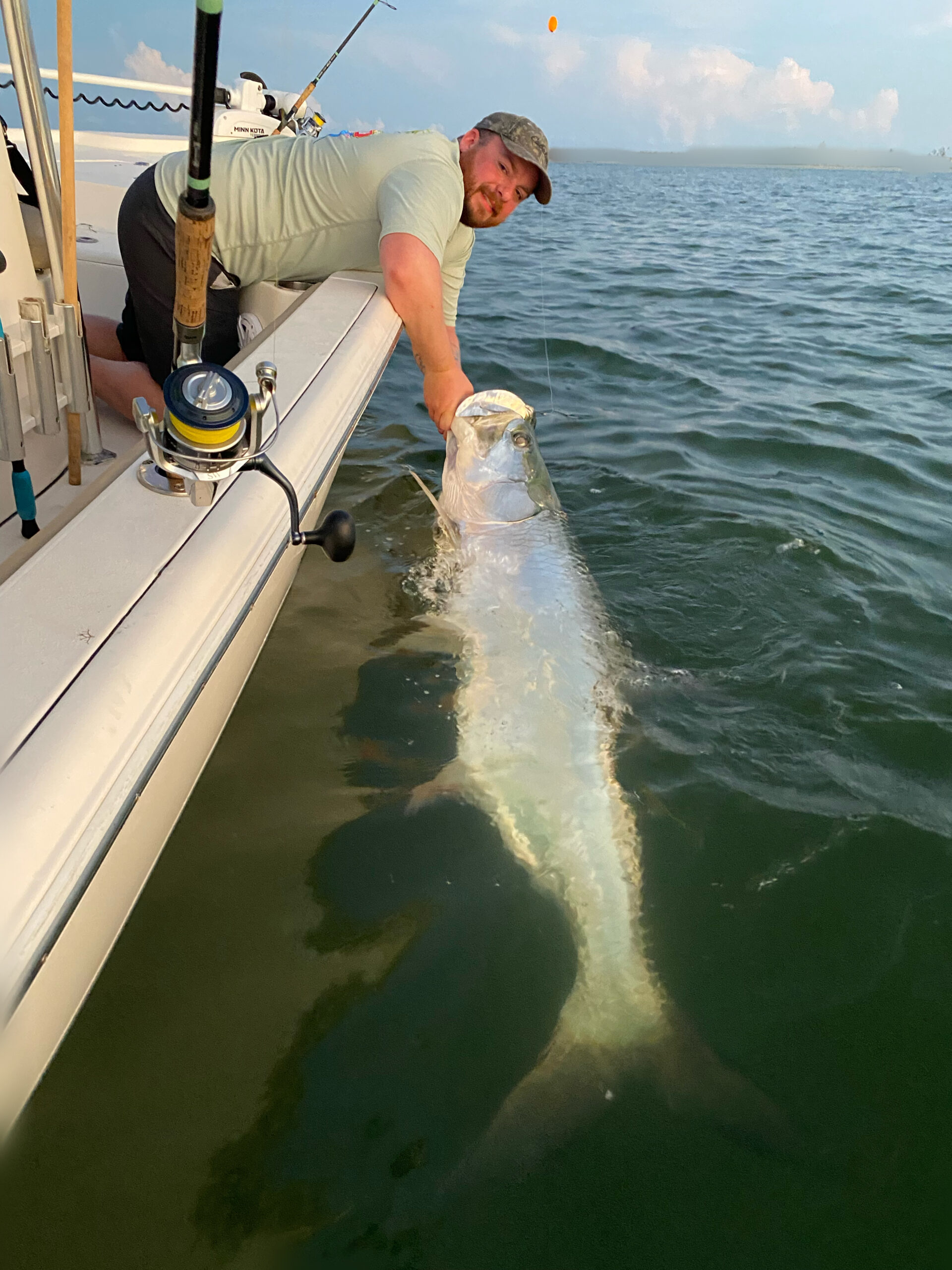

Spring Kickoff (March – May)
By late March and into April, we start spotting fish in the deeper channels—especially in places like the Caloosahatchee River, the passes around Sanibel and Captiva, and Pine Island Sound. This is the early season bite when tarpon are just getting here, feeding heavy, and not yet pressured by crowds. It’s one of my favorite windows because you can find aggressive schools and sometimes even have them all to yourself.
Peak Season Mayhem (May – July)
May through early July is prime time. This is when Fort Myers really shines. The beaches light up with migrating schools, the passes are packed with fish, and the action is nonstop on the right tides. Sanibel, Captiva, and even areas off Cape Coral are buzzing with tarpon—and you’ll find boats lined up drifting live baits or hunting cruisers with fly rods and light tackle. The fish are feeding hard and staging for their offshore spawn, which means your odds of hooking a big one are as good as they get all year.
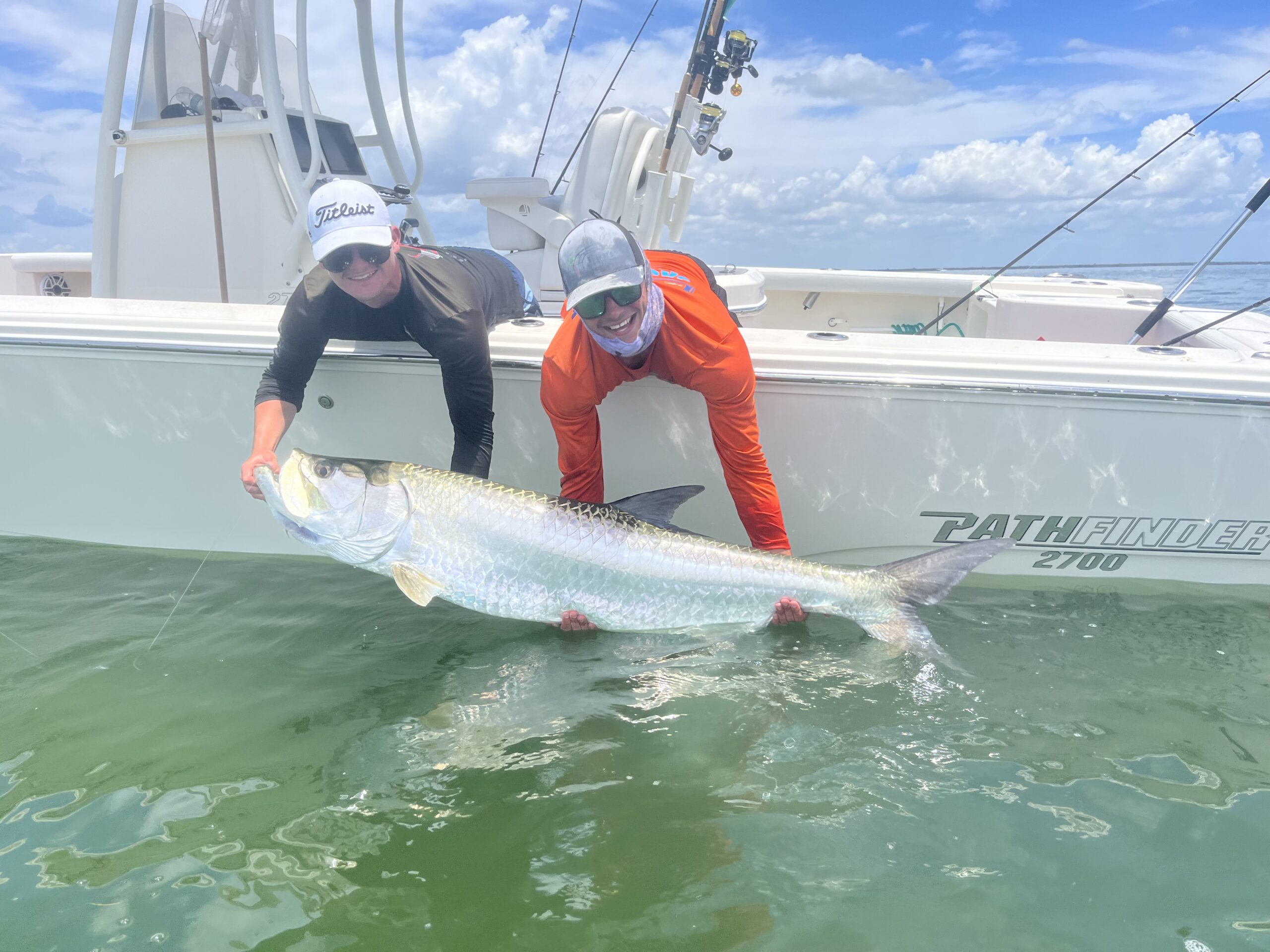
Spawning Season & Offshore Movement (June – August)
As the summer rolls on, a good chunk of the tarpon start heading offshore to spawn. They’ll gather around deep wrecks, reefs, and strong current zones to release eggs under the cover of darkness. That said, there are still plenty of fish hanging inshore, especially in the early morning or at night. Bridge fishing during these months can be lights-out if you hit the tides right. Nighttime trips become a favorite this time of year—quiet water, feeding tarpon, and cooler temps make for some epic sessions.
Fall Push (August – October)
By late summer and early fall, the bulk of the migratory fish are starting to slide south again, following bait schools and chasing warmer water. But this doesn’t mean it’s over. We often get a solid second run of fish pushing through the area, especially in the backwaters and around the river mouths. This time of year can offer great shots with a little less pressure and some seriously memorable eats.
Winter Patterns (November – February)
While most of the migratory giants head for the Keys and deeper Gulf water in the winter, we still have a resident population that sticks around. These smaller tarpon—anywhere from 10 to 40 pounds—can be found in creeks, canals, and deep river bends where the water stays warmer. Winter tarpon fishing requires patience and timing around warm fronts, but when it’s on, it can be a blast.

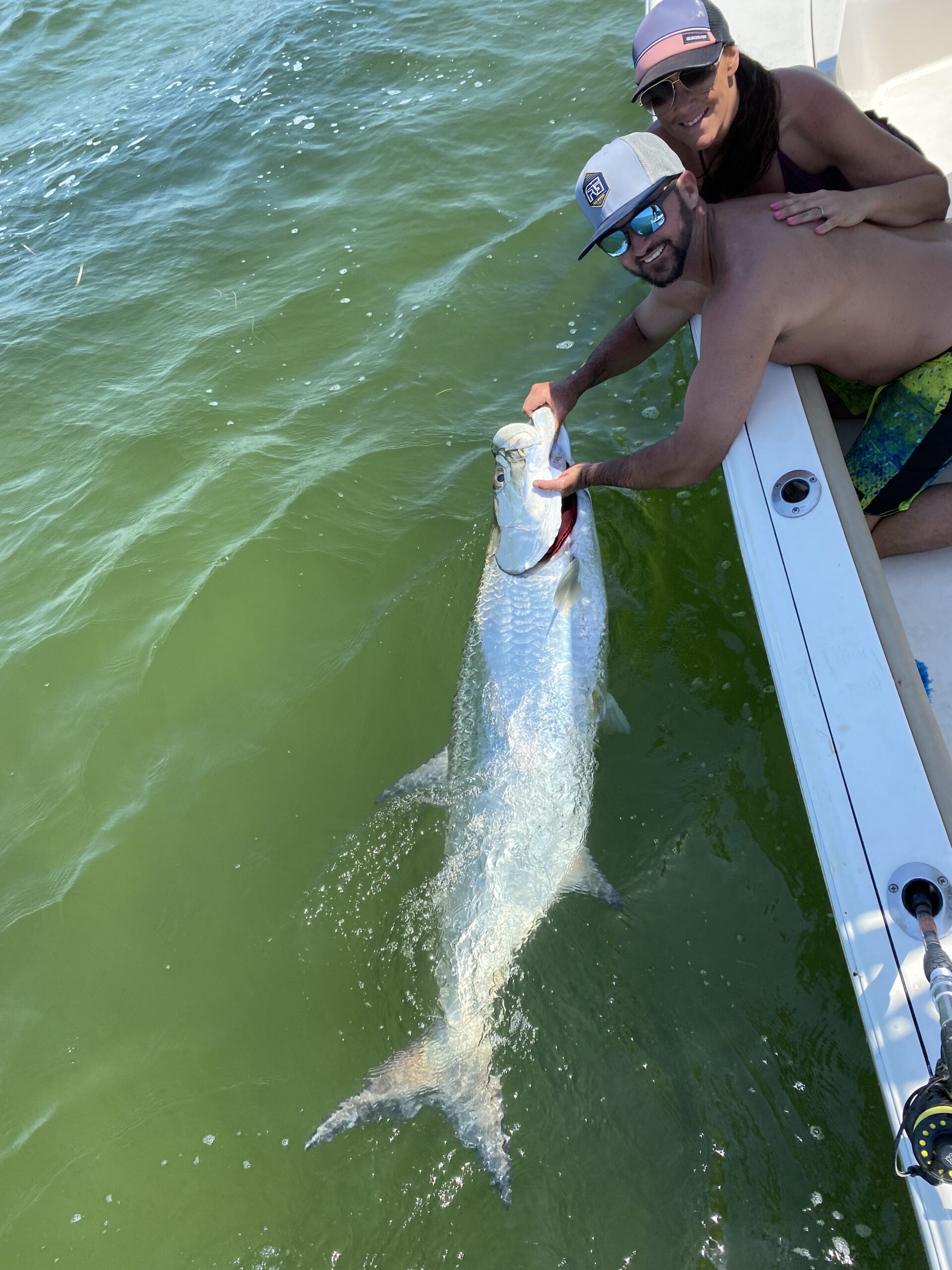
Tarpon Fishing Spots I Like To Target During Migration
Here’s where I’ve found the most consistent tarpon action over the years:
- Sanibel & Captiva Beaches and Passes – Great for sight fishing and intercepting migrating schools during spring and early summer.
- Pine Island Sound – A mix of grass flats, drop-offs, and mangrove shorelines that hold tarpon all season long.
- Caloosahatchee River – A productive area in early spring and again in fall, plus a winter holdover spot for resident fish.
Offshore Wrecks and Reefs – Key spawning zones from late June through August. We sometimes fish these on calm days when the fish are schooled up.

Hopefully This Helps
Watching a 100-pound tarpon explode on a crab, tailwalk across the surface, and go airborne three more times… it never gets old. Fort Myers is a special place for tarpon fishing—not just because of the numbers of fish, but because of how consistent and diverse the fishery is throughout the migration. If you’re planning a trip, I’d be glad to help you line it up around peak timing and conditions. With the right approach, the right guide, and a little luck from the tide, you’ll be in for the fight of your life.
Fish With Capt. Jack Swedberg
Jackpot Fishing & Ecotours offers back bay trips for shallow water species, nearshore fishing for permit, snapper, sharks, & more, tarpon fishing charters, and night fishing charters for whatever’s biting!
Our charters start out of Sanibel/Fort Myers Beach area with convenient waterfront pickups also available. Captain Jack has poured 15 years of passion into these waters and loves putting his clients on fish!
Call/text Captain Jack Swedberg for daily availability.
